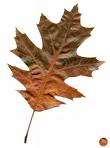|
Bog – a freshwater
wetland with peat deposits and evergreen
Ecosystem – a group of organisms that interact with each other
Floodplain – flat land next to a stream or river that Ground Water - water under the ground that is part of the
Marsh – a wetland with shallow water where non-woody
plants wetland; it may mean providing a new habitat for the organisms being displaced Natural Resources – organisms and material found in the
Riparian zone – the area next to a river or lake which is Sediments – particles deposited by wind and water
Swamp – a wetland with very wet
soil and standing water; dry during the summer and fall; it either has a bedrock or hard clay layer which helps to hold water Water table – the layer under the ground which is saturated
Watershed - an area of land drained by a river or river system supports plants and organisms that are adapted to the conditions
|
Evergreen trees
have needles and cones. They keep
Look at the needles to see if they are in a group of 2 or 3
Look at the needles to see if they are in a cluster of 5
Look at the needles
to see if they are
short, flat and white
Broadleaf trees
have leaves and fruits or flowers.
Look at the leaf.
Does it have 5-8 lobes?
Look at the leaves. Are they opposite one another? Do they |




